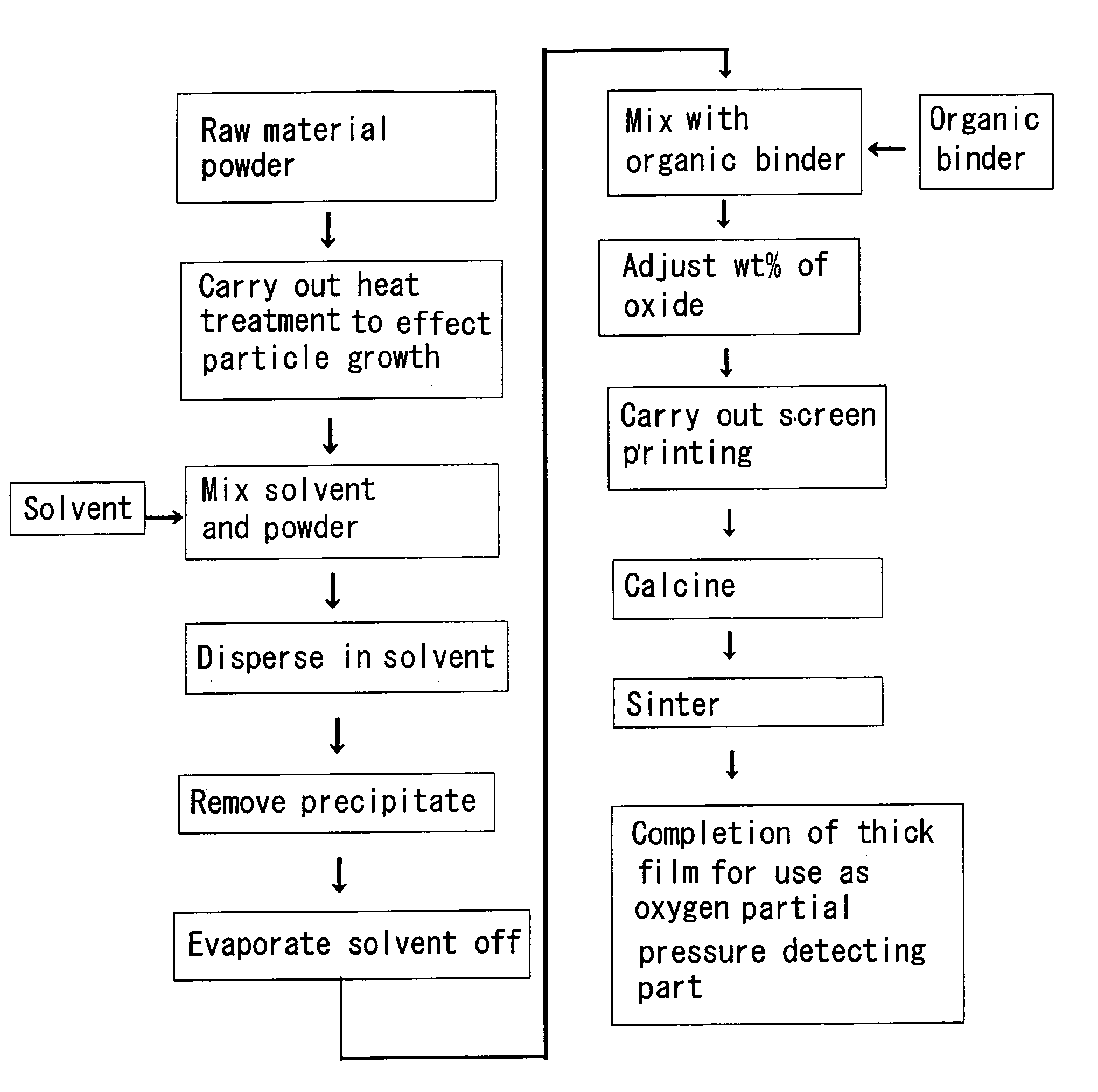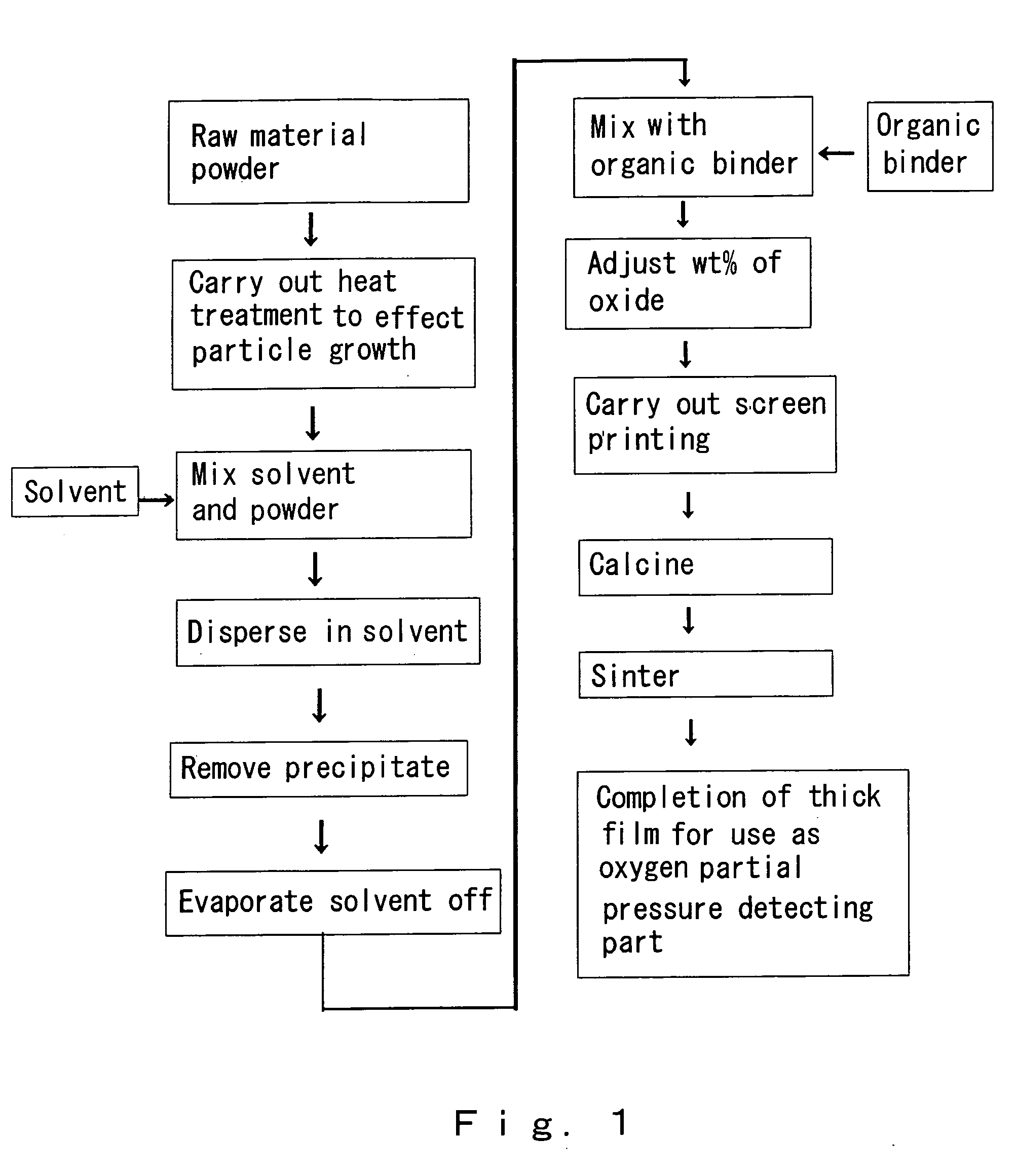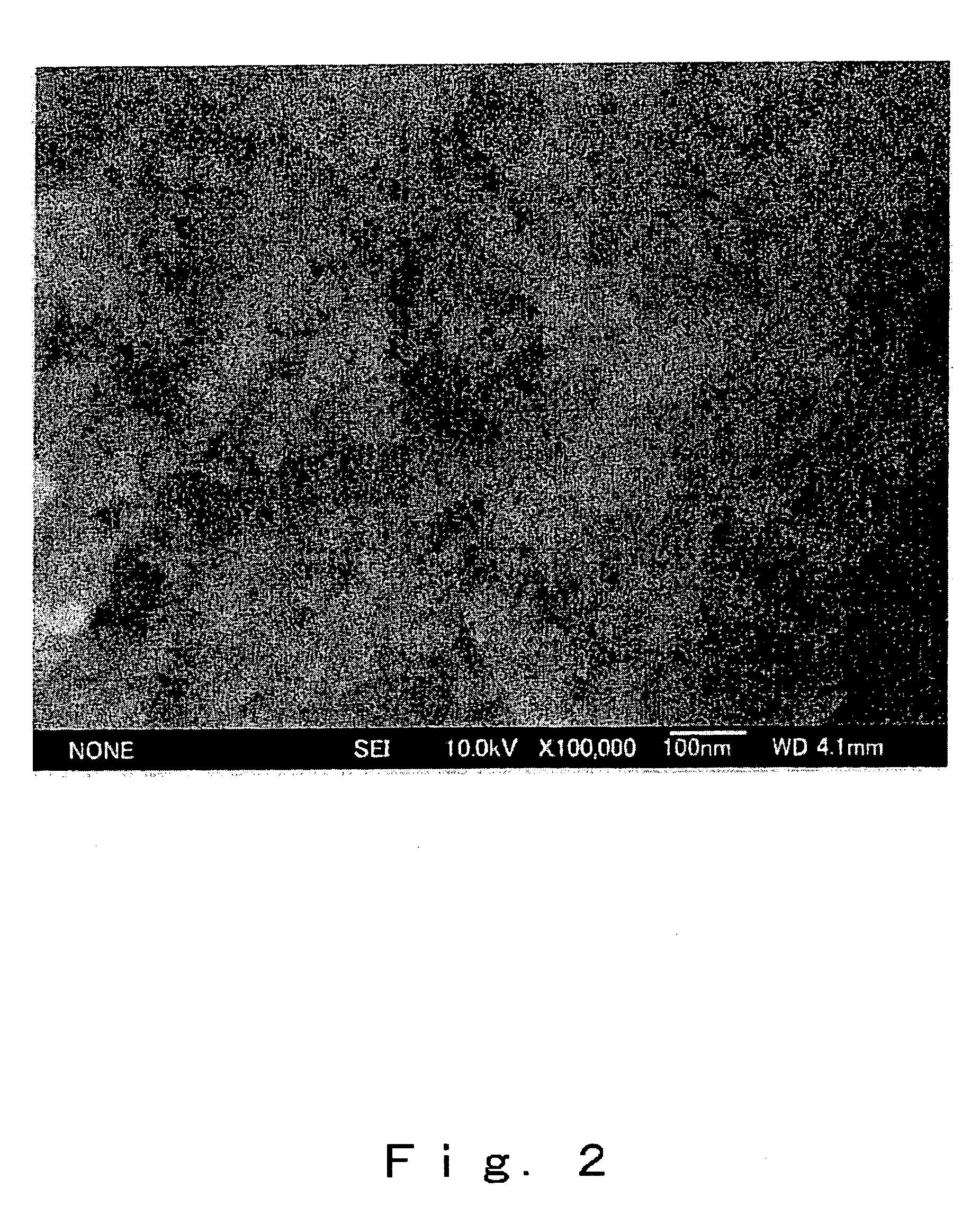Process for producing oxygen partial pressure detecting part of resistance oxygen sensor
a technology of oxygen sensor and partial pressure, which is applied in the direction of instruments, coatings, chemistry apparatuses and processes, etc., can solve the problems of difficult to make the sensor small, poor response of the output on the oxygen partial pressure change, and complex structur
- Summary
- Abstract
- Description
- Claims
- Application Information
AI Technical Summary
Benefits of technology
Problems solved by technology
Method used
Image
Examples
example 1
[0039] In the present example, a powder comprising cerium oxide fine particles obtained through a precipitation method was used as a raw material. Briefly describing the method of preparing the powder using the precipitation method, first a cerium nitrate aqueous solution was prepared. Next, ammonia water was added, whereby a precipitate was produced. This precipitate was mixed with carbon, and heated for 4 hours at 600° C. in air, thus obtaining the powder. Scanning electron microscope (SEM) photomicrographs of the powder (the raw material before the heat treatment step) are shown in FIGS. 2 and 3. The raw material had a particle diameter of 10 to 20 nm, and was agglomerated. Next, as a pretreatment step, the powder was subjected to heat treatment for 4 hours at 900° C. in air. An SEM photomicrograph of the raw material after this step is shown in FIG. 4. Particle growth occurred, the average particle diameter becoming 48 nm.
[0040] Next, ethanol was added as a solvent in a proport...
example 2
[0046] A powder comprising cerium oxide fine particles obtained through a precipitation method was used as a raw material, and the heat treatment temperature in the pretreatment was made to be 950° C.; an SEM photomicrograph of the powder in this case is shown in FIG. 12. Particle growth has occurred to over 100 nm. It was thus found that in the case of manufacturing a thick film for which the average particle diameter of the ultimately obtained thick film is to be 100 nm, a sintering temperature in the pretreatment step of 950° C. is too high.
example 3
[0047] In the present example, a powder was prepared using the following procedure. First, a cerium nitrate aqueous solution was prepared. Next, ammonia water was added, whereby a precipitate was produced. This precipitate was mixed with carbon, and heated for 4 hours at 900° in air, thus obtaining the powder. In this heat treatment step, the heat treatment step for changing the precipitate containing the hydroxide, water and soon into the oxide and the heat treatment step for effecting particle growth were carried out consecutively. The powder was then mixed with ethanol, and then a thick film was manufactured using the same method as in Example 1. The wt % of the oxide contained in the paste was made to be 20 wt %. The porous thick film manufactured in this way contained hardly any cracks, and hence it was found even if the heat treatment step for changing the precipitate containing the hydroxide, water and so on into the oxide and the heat treatment step for effecting particle gr...
PUM
| Property | Measurement | Unit |
|---|---|---|
| particle diameter | aaaaa | aaaaa |
| particle diameter | aaaaa | aaaaa |
| particle diameter | aaaaa | aaaaa |
Abstract
Description
Claims
Application Information
 Login to View More
Login to View More - R&D
- Intellectual Property
- Life Sciences
- Materials
- Tech Scout
- Unparalleled Data Quality
- Higher Quality Content
- 60% Fewer Hallucinations
Browse by: Latest US Patents, China's latest patents, Technical Efficacy Thesaurus, Application Domain, Technology Topic, Popular Technical Reports.
© 2025 PatSnap. All rights reserved.Legal|Privacy policy|Modern Slavery Act Transparency Statement|Sitemap|About US| Contact US: help@patsnap.com



